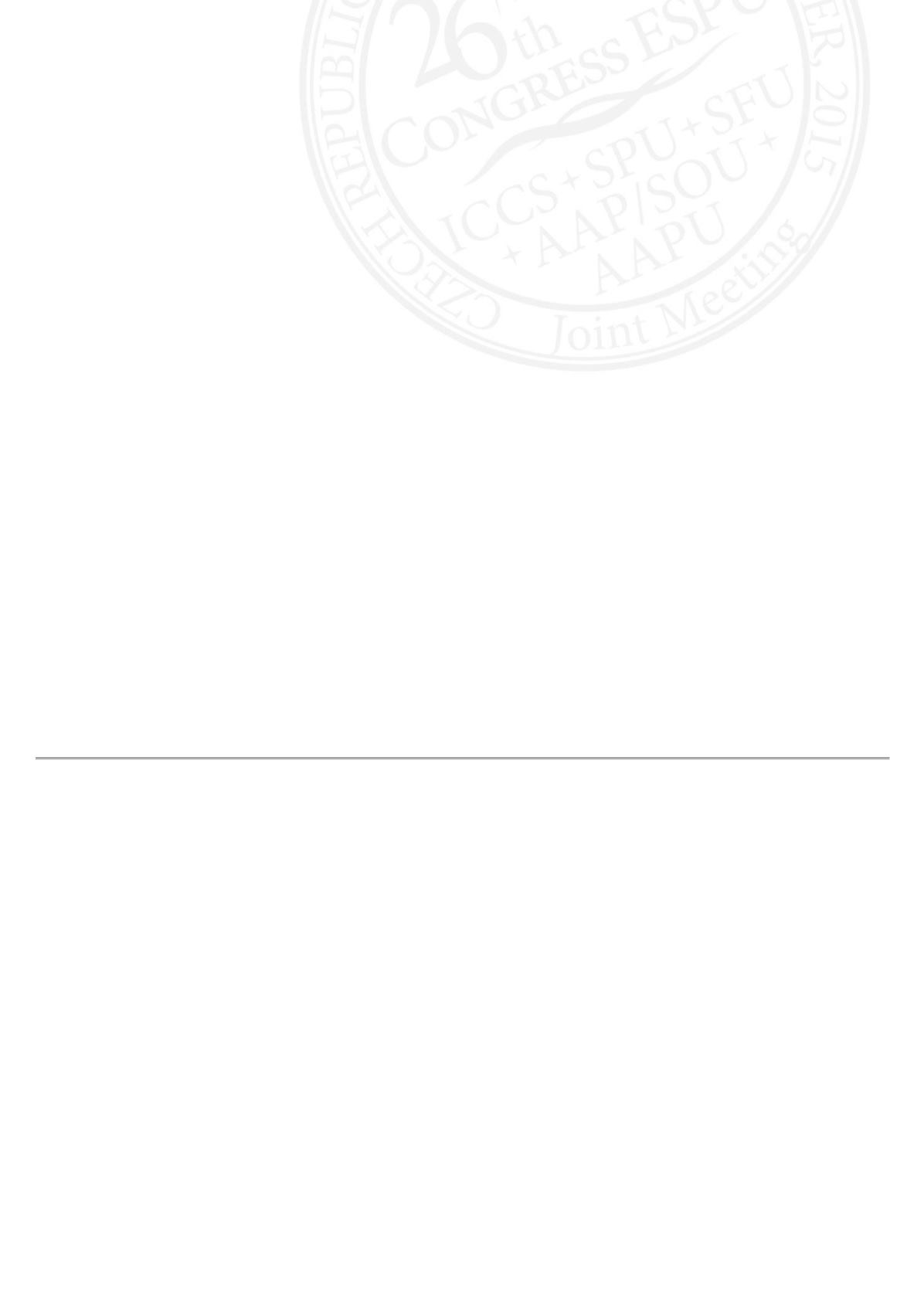

12:01 - 12:04
S8-7
(PP)
DOES ENDOSCOPIC DOES ENDOSCOPIC PUNCTURE OF URETEROCELE (EP)
PROVIDE NOT ONLY AN INITIAL SOLUTUION, BUT ALSO A DEFINITIVE
TREATMENT IN ALL CHILDREN? OVER THE 26 YEARS OF EXPERIENCE.
Stanislav KOCHEROV, Shahar ROTEM, Amicur FARKAS and Boris CHERTIN
Shaare Zedek Medical Center, Pediatric Urology, Jerusalem, ISRAEL
PURPOSE
We have retrospectively evaluated all patients who underwent EP of ureterocele over the last 26 years with special
reference to the need in the second intervention and disease free status.
MATERIAL AND METHODS
78(69%) of the 112 patients following EP and completed follow up were included. 51 (65%) were diagnosed prenatally
and 27 (35%) postnatally. 46 patients (60%) had intravesical, while 32 (40%) had ectopic ureterocele. 27 children
(35%) had nonfunctioning, 19(24%) poorly, 24(31%) moderate and 8(10%) normal functioning ureterocele moiety.
VUR was present in 36(46%) children (43 renal refluxing units (RRUs)). Median age at time of puncture was 4 months.
Median time of the follow up was 12 years (range 1 -25 years) while 23(30%) followed over 10 years and 15 (19%)
completed adolescent period.
RESULTS
Four children with ectopic ureterocele required secondary puncture. Ectopic ureterocele children had significantly more
postoperative UTIs (13 (40%) ectopic vs 4 (19%) intravesical p=0.047).
19 RRUs (44%) showed spontaneous resolution of VUR. 14(18%) children required additional surgery: 7: endoscopic
correction of VUR, 3: ureteral reimplantation and 4: partial nephrectomy. The need for additional surgery following
puncture was higher in the group of children with ectopic ureterocele, however this difference did not reach a statistical
significance (p=0.716).
CONCLUSIONS
Our data show that endoscopic puncture of ureterocele is a durable and long term effective procedure in vast majority of
the children. Although the children with ectopic ureterocele are more prone to develop UTI and undergo additional
surgery, major surgery is rarely indicated even in this group of patients.












